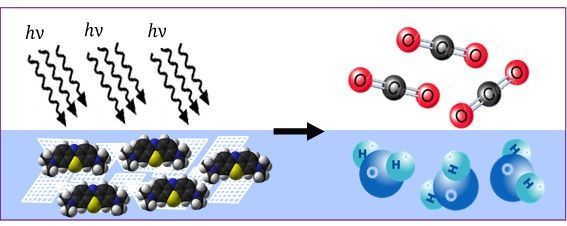3D Printed Floating Photocatalysts for Wastewater Pollutant Removal
Published on by Water Network Research, Official research team of The Water Network in Technology
Researchers from Universidad Politécnica de Madrid have obtained 3D printed floating photocatalysts to remove persistent pollutants in wastewater.
A team of researchers from School of Industrial Design and Engineering (ETSIDI) at Universidad Politécnica de Madrid (UPM) has successfully tested a new treatment for the degradation of contaminants of emerging concern (CECs) in wastewater.
They have used floating photocatalysts and solar radiation as the sole reagent, an efficient and economical process that is easy to implement and compatible with the environment.
Organic contaminants, especially contaminants of emerging concern (CECs), have a substantial environmental impact. There are some pharmaceutical products among these contaminants that, though they are found in low concentration, they may cause significant damage to flora and fauna and thus human health. Therefore, a search for alternative treatments is needed to achieve an efficient degradation of these pollutants in water and wastewater.

Photocatalytic Wastewater Treatment". María José Martín de Vidales Calvo.
The group of Analysis and Optical Characterization of Materials from ETSIDI at UPM has been working for years on water treatment residuals applying advanced oxidation processes. These processes are based on the generation of hydroxyl radicals such as oxidizing agents of contaminant organic matter. Within this trajectory, various members of the group have carried out a project focused on the efficient degradation of CECs.
María José Martín de Vidales, a researcher involved in this study, explains, “this type of contaminant has a high presence in wastewater, since they cannot be completely removed using conventional water treatments and its presence, even in low concentration, cause health issues (problems in the hormonal and endocrine systems, various types of cancer, antibiotic resistance, etc.)”.
Advanced oxidation processes and, especially, the titanium dioxide (TiO2) photocatalytic process is considered an option with positive results for an efficient treatment. However, the photocatalyst must be accessible to the UV radiation, for the activation of the TiO2. For this reason, it is recommendable to use a floating photocatalyst (with lower density than water) if the UV light comes from the solar radiation because it will be on the water surface. In addition, “this characteristic of the catalyst can entail an increase of the process efficiency if the pollutant is mainly located on the surface of the water. In this context, the goal of this work is the preparation of floating photocatalysts for the removal of CECs from wastewater” María José Martín concludes.
The obtained photocatalysts showed a high activity compared to a plate geometry, used as a reference value. Thus, this study opens the doors to the in-situ treatment of CECs, using floating photocatalysts and solar radiation as the sole reagent, a very economical, efficient, easily implantable and environmentally compatible process.
Reference :
Martín de Vidales, M.J.; Nieto-Márquez, A.; Morcuende, D.; Atanes, D.; Blaya, F.; Soriano, E.; Fernández-Martínez, F. 3D Printed Floating Photocatalysts for Wastewater Treatment. Catalysis Today. May 2019. DOI: 10.1016/j.cattod.2019.01.074
Media
Taxonomy
- Pollutants
- Water Pollution
- Oxidation
- Photocatalysis
- Micropollutants
- Waste Water Treatments
- Polluted Water Oxidation
- Solar Water Disinfection
- Wastewater Treatment
- Pollution
- Solar Energy
- Solar Thermal Plants
- Solar Water Pumping
- Pollution
- Solar Cells
- Photocatalyst
- Plastic Pollution
- Solar Pasteurization